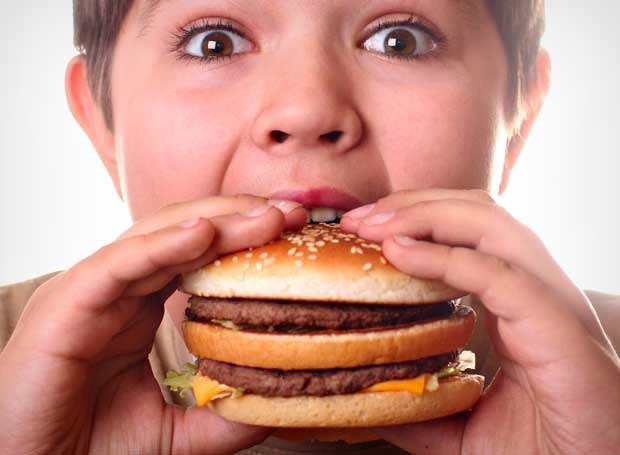When Food You Love Doesn't Like You
Before my doctoral program - which required me to narrow down to a specialty (sugar addiction) - I had studied food intolerances.
Many books on the subject start with food reactions, then move into chemicals in our homes and offices, gasoline fumes, and more. Important as those things are, they're not about nutrition.
My interest in food intolerances has always been their link with addiction.
Recently, I "attended" a webinar by J.J. Virgin, whose first book (I believe) was on food intolerances and how to eliminate those foods to improve health and lose weight. The webinar re-sparked my interest in food intolerance and addiction.
Common triggers for food intolerance include chocolate, corn, soy, wheat (or other gluten-containing foods), peanuts, dairy, eggs, sugars and other sweeteners.
What Does Food Intolerance Look Like?
Signs and symptoms can include headache/migraine, joint pains, fatigue, sleepiness, heart palpitations, depression, irritability, stomach pains, bloating, and many more.
Because digested food moves through the bloodstream, the effects of an intolerance can show up virtually anywhere in the body.
Food reactions might be the same every time the food is eaten, such as a rash.
Or the reactions might vary - say, a non-itchy rash one time and itching with no rash another time.
The reaction might be cumulative. Maybe a small portion of the food causes no reaction, but a portion eaten again that day, or several days in a row, does causes one.
Addiction is another possible reaction that may develop over time.
What Causes Food Intolerances?
The causes are many, but let's keep it simple.
One cause is a genetic intolerance or a tendency toward it.
We can become intolerant to a food we eat often or in large quantities. Overeating a food uses up enzymes specific to digesting that food, so complete digestion is prevented.
That may result in improperly digested food particles moving through the digestive tract and bloodstream, triggering an immune reaction. The undigested, unabsorbed food provides no nutrients.
We can also become reactive to a food we eat together with another triggering food. So the list of triggering foods may grow, resulting eventually in malnutrition.
Food Reactions May Change Over Time
The guiding principle of the human body is homeostasis.
When a trigger food is first eaten, the body attempts to restore homeostasis by ridding itself of the offending food. It prevents absorption by attaching antibodies to the partially digested food while it's in the intestine. That might successfully eliminate the food before it can pass into the bloodstream.
If the food does enter the bloodstream, it can trigger inflammation. The acute reaction may be short, and the body may return to homeostasis quickly.
If someone continues to eat a triggering food over time, the body undergoes an adaptation. The immune system may become slower (or less able) to respond. The reaction may now manifest more slowly than the acute reaction. Signs or symptoms may last longer, sometimes hours or days.
How Can That Become a Food Addiction?
The immune response to a triggering food involves a release of stress hormones, opioids, such as endorphins (beta-endorphin), and chemical mediators like serotonin. The combination can produce temporary symptom relief through the analgesic action of endorphin and serotonin, plus mood elevation and a feeling of relaxation.
In that way, eating the triggering food may make someone feel better almost immediately and even think the food is beneficial.
Endorphin release typically involves a concomitant release of dopamine. The combination of those two brain chemicals and serotonin forms what I've always called the "addictive package." Avoiding the food could lead to withdrawal.
After long-term use, someone may eat the triggering food not to experience the pleasure of the chemical "high," but to relieve the distress and withdrawal without it. It's almost textbook addiction.
How Does Intolerance/Addiction Affect Health?
As someone addicted to a triggering food continues to eat more of it, the immune system must keep adapting, and may become hyper-sensitized, reacting to more and more foods - especially those eaten together with reaction-triggering foods, or with sugar.
The constant demand on the immune system can lead to immune exhaustion and degenerative reactions, depending on genetic weaknesses. The signs and symptoms listed above are just a start.
Sugar can be a major player in this because it causes inflammation in the body and makes it more susceptible to food reactions. Eating triggering foods plus sugar can make it even more likely that new reactions will occur.
I recall a book by Nancy Appleton, who suggested that eggs might trigger reactions in many people because they're so frequently eaten at breakfast with orange juice. Cake is another example: sugar plus wheat, eggs, milk.
As the addictions continue, cravings occur, leading to increased consumption. As more and more foods trigger an immune response, the result may be malnutrition, as explained above.
Stats say that rates of food intolerance are rising. My theory is that it's at least partly due to sugar in our diets - including sneaky sugars that are often viewed as healthful, such as agave, fruit, fruit juice, and sweeteners.
Stopping the Cycle
Definitely give up any foods you suspect may be causing any reactions - even if you love them. Think about foods you eat with those triggering foods on a regular basis, and consider eliminating those, as well. Above all, avoid sugar.
Follow this plan, as J.J. Virgin recommends, for 3 weeks.
In the meantime, you may have cravings. If so, use my proven, time-tested recommendation of a teaspoon of liquid B-complex (complete B-complex) to kill the craving within minutes.

Hi! I am a robot. I just upvoted you! I found similar content that readers might be interested in:
https://www.linkedin.com/pulse/when-food-you-love-doesnt-like-joan-kent-phd-best-selling-author